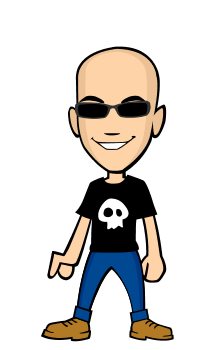My previous blog was about working with special effects on set. Props, sculptures, make-up... This one is about shooting the "nothing". Green/blue screens, backgrounds out of focus, tracking points... The incredible but complex world of Computer Generated Images (CGI)!
_04.14.37_fa_rszd.jpg)
Noctem´s Divinity music video - 3D artist: JosĂ© RodrĂguez
These kind of effects started being used in the late 80´s with productions such as Young Sherlock Holmes or Abyss, by visionary director James Cameron (we owe him so many technological advances...) and nowadays this industry is so well positioned that it makes studios spend huge amounts of money to generate visual effects (VFX) for their projects.
Is this good? Is this bad? For me, it´s just an option that depends on the project.
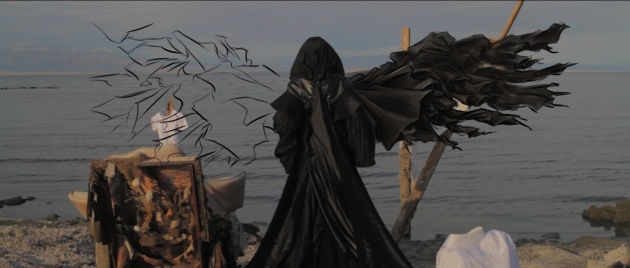
Death´s wings at Heraion - In search of life by Nicolás Castelló and Hugo Saláis.
Working with this techniques is pretty complex and takes money + time (what doesn´t?) and we could be dealing with this topic for years, but I want to focus on how to approach to them as filmmakers through some advices I learned from my experience.
_04.17.49_fa_rszd.jpg)
Creating Aeterna´s ashes statue, by Sergio López.
After working with a lot of different CGI artists I´ve noticed that it´s truly important that filmmakers and producers learn how work to with this techniques. Most of the times it takes a lot of unnecessary post-production time to fix mistakes done during the shooting because of a lack of knowledge.
Here´s one of this errors that had to be fixed in my own work:
_04.16.40_fa_rszd.jpg)
This take had a big problem, and this was that the track points (chroma´s red crosses) needed to be of another color. Why? Track points are used when you shoot takes with real camera movement in order for the computer to detect how the camera is moving and make the effects "follow" their position on the take.
Obviously, track points need to be removed. The technique we use for doing that is the same to remove a chroma: select the color that they have and make computer erase anything with that color (that´s why, if you shoot on a green chroma, the characters don´t have to wear anything green at all, or it will be erased as well). Here it was difficult because human skin has a lot of red color in it and that made the computer erase some "parts" the actress´. We lost a lot of time masking the goddamn red trackpoints.
By the way, those bars on the right were put there for generating the real shadows that the girl would have in the final shot (she was trapped in a cage, so we needed to put the bars´shadows on her body and face and getting this done in post-production would look too fake).
Here´s a good use of track points:
_04.19.00_fa_rszd.jpg)
Aeterna, by Sergio LĂłpez.
Don´t forget the track points: if you don´t use them, the CGI artist will have to animate the effect masking and layering frame by frame (rotoscoping). That means that instead of spending 20 minutes to animate the effect, he´ll spend days trying to make the VFX follow the camera movement "manually", and that´s difficult to make it look realistic. Almost every CGI artist will tell you this: rotoscoping is HELL.
Another common mistake is the bad lighting: if you don´t isolate the green/blue reflections of a chroma and those "contaminate" the scene, you´ll get a green/blue tone on the final take that may break the aesthetic you had in mind. Also, chroma needs to be illuminated with the same blue/green tone and luminance. If there are shadows the computer may not recognize those parts and won´t remove them, this means extrawork (masking!).
_04.16.01_fa_rszd.jpg)
Shooting Noctem´s Divinity music video
Know the software:Â No, After Effects is not the only one generating VFX. There are a lot of them and each of one has its pros and cons. For a single take a CGI artist might go through 4-5 different programs to get to the final result (modelling, animating, composite, color, lighting, tracking, etc). Lightwave, 3D Studio Max, Cinema 4D, Blender, Houdini, Maya...Â
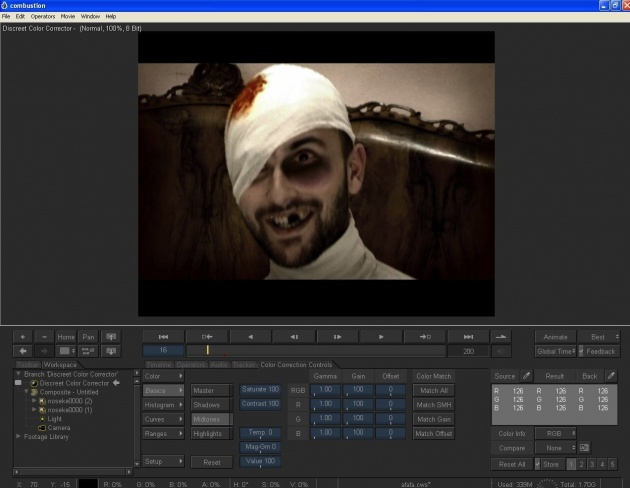
For this project Daniel Sarmiento made me look this way digitally using Combustion
Be honest and realistic: A lot of filmmakers, script writers or producers think that with CGI everything is possible and easy to do. Well, it actually isn´t that way. As said before, we need to prepare the take on set, do tests, think if it is going to be realistic/believable (one of CGI´s problems is that for the viewer those feel articial) and check if it is impossible to get the take done in an easier way without VFX. If you can do it the "old way", and that means without computer, go for it.
Also, there are some easier effects than others; it´s not the same to shoot a car chase that to generate fluids, a dragon or the demolition of a building.
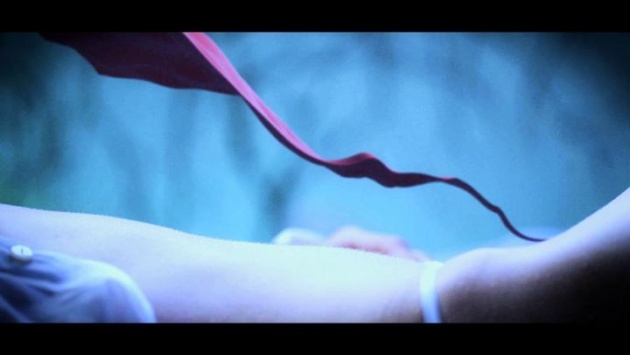
Pay attention to the detail: The take above is from an unfinished Aeterna shot. If you are getting into VFX you need to make it feel like if the effect was really on set, so for this particular take we had to put the shadow of the red fabric on the model´s belly (light comes from above). This task gets more difficult when you go into bigger and more complex takes like this particular Sinnside´s one:
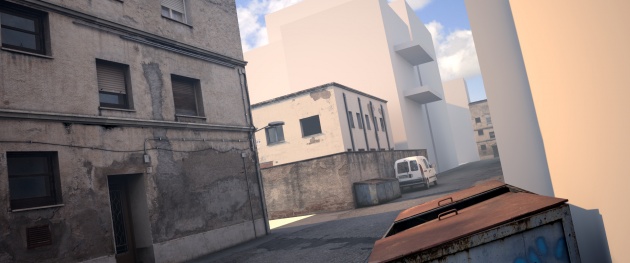
JosĂ© RodrĂguez is generating a whole street for one of the scenes of this shortfilm. Everything you see in the picture has been modelled and integrated by him and his computer. The "white boxes" are the basic structures he needs to put before putting the realistic layers, cables, etc. A hell of a job, but as you can see, the result pretty awesome.
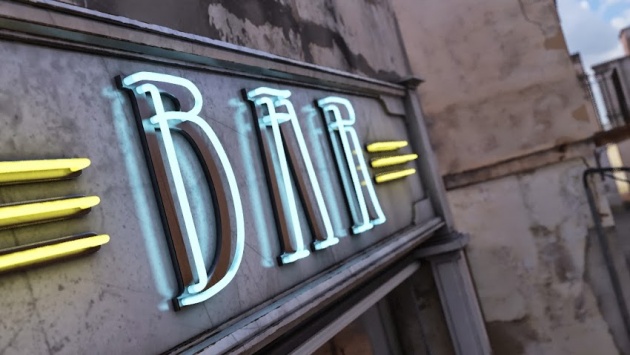
Be original: Please, optical flares, "old film" scratches, computer camera shakes, fake Action Essentials gunshots and explosions, fake rain that doesn´t make characters wet, spaceships and magic spells are OVERUSED, and digital effects are not just THAT. Be wise, improve your projects with these techniques but don´t COPY. It´s so easy for professionals to detect how effects are done that it´s easy to fall into an amateuristic way of work and lose all credibility as filmmakers, so please: PAY ATTENTION!
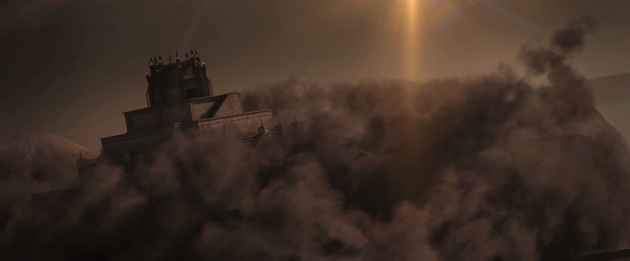
As this topic is huge I´ll be writing more about it but I think that for now it´s more than enough and I got too serious and it´s 6.24 AM in Spain... Let´s say goodbye for now!
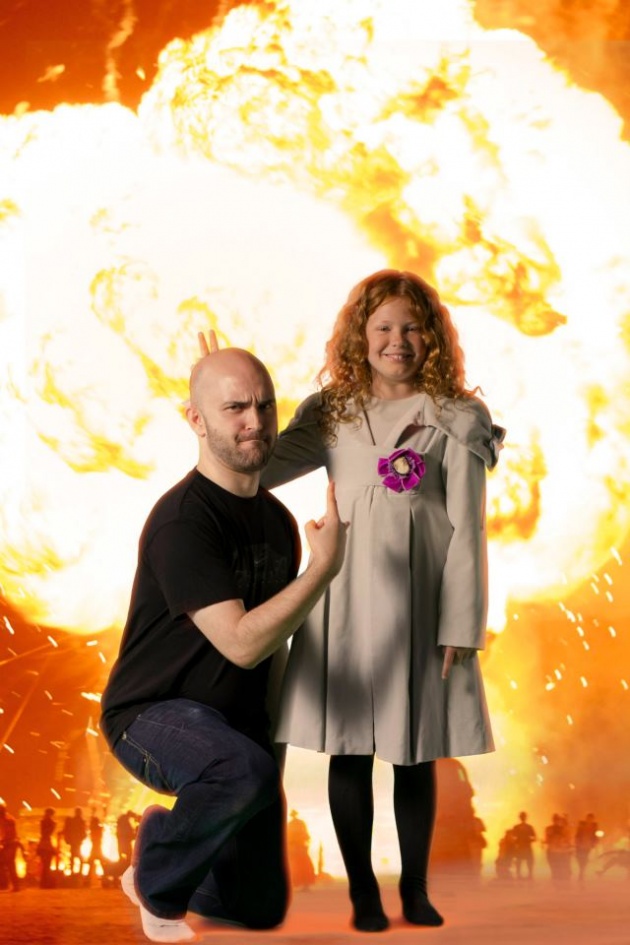
Shooting Sinnside with LucĂa Stoks at Llumm Studios, by Claudia Marconell

